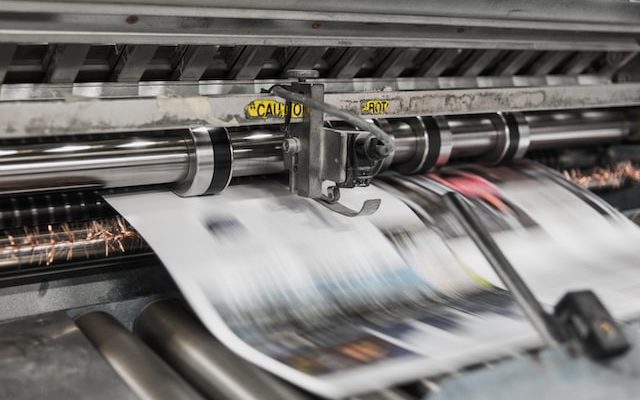With international inflation rates reaching levels not seen since the 1980s, print production and distribution costs are pushing losses up for some legacy publishers. Digital transition is seen as a clear hope for beleaguered publishers; refocusing on digital advertising and subscription revenues is seen as an obvious counter to the profit pressures caused by print price hikes.
Takeaways
- Following the pandemic and fueled by the war in Ukraine, inflation rates have reached historic highs across the world. The World Economic Forum is reporting that the average annual inflation rate in the first quarter of this year is at least double what it was in the first quarter of 2020 in 37 out of 44 countries analysed by the Pew Centre.
- Rising material and energy costs have put pressure on all sorts of businesses, but print publishers have been acutely affected. Print production costs are being driven up by rising paper and energy prices, with many printers saying their costs were rising faster than headline inflation figures. A Printweek survey in the UK found that almost a third of printers reported costs rising in excess of 20% over the last 12 months.
- This level of price pressure is being repeated internationally and an increasing number of publishers are looking at divesting their print operations. According to WAN-IFRA’s World Press Trends Report, three US newspaper publishers – Lee Enterprises, Gannet and the Dallas Morning News – are reporting multi-million dollar losses exacerbated by print cost increases of over 30%.
Digital revenues
With the print price hike pushing down legacy income, a renewed focus on digital subscriptions and advertising is the best bet for publishers’ looking to replace print profits.
- A recent article from Twipe contrasts the retraction caused by print price hikes with the success the same publishers have seen with growth in digital. Gannett, where digital business represents 35% of total revenues, reported 1.5% digital growth in Q2 2022 compared to Q2 2021. Lee Enterprises posted digital growth of 33% year over year with online making up 31% of total revenues.
- There has been some concern around increased subscription cancellation rates, highlighted initially by the audience losses reported by Netflix at the start of the year. But overall growth continues, with less than 10% of attendees at an INMA webinar last month reporting pessimism about subscription growth going into the remainder of 2022.
- Writing for Twipe, Mathew Lynes says digital subscription acquisition is working well for publishers. In Q2 this year, Gannett reported 35% growth in paid digital subscriber numbers year over year. The Dallas Morning News added more than 2,000 new digital subscribers in Q2, up 18.4% on Q2 2021. And with half a million digital-only subscribers, Lee Enterprises is up 49% year over year. The one caveat is around increased cancellation rates and a focus on subscriber retention is recommended.
Digital advertising
Past investments in building a digital subscription base are also paying dividends in advertising revenues. With the uncertainty surrounding third-party cookies, efforts to capture registrations and subscriptions are strengthening publishers’ data position, placing them at the centre of future ad tech ecosystems.
Digital advertising grew by 33% in 2021 and ad spending is forecast to grow by almost 10% in 2022. Although the ad market is tightening, Zenith predicts digital advertising across all channels will exceed 60% of total global ad spend for the first time in 2022. When looking at digital advertising for publishing specifically, WAN-IFRA found that revenue grew by 16.5% in 2021.









